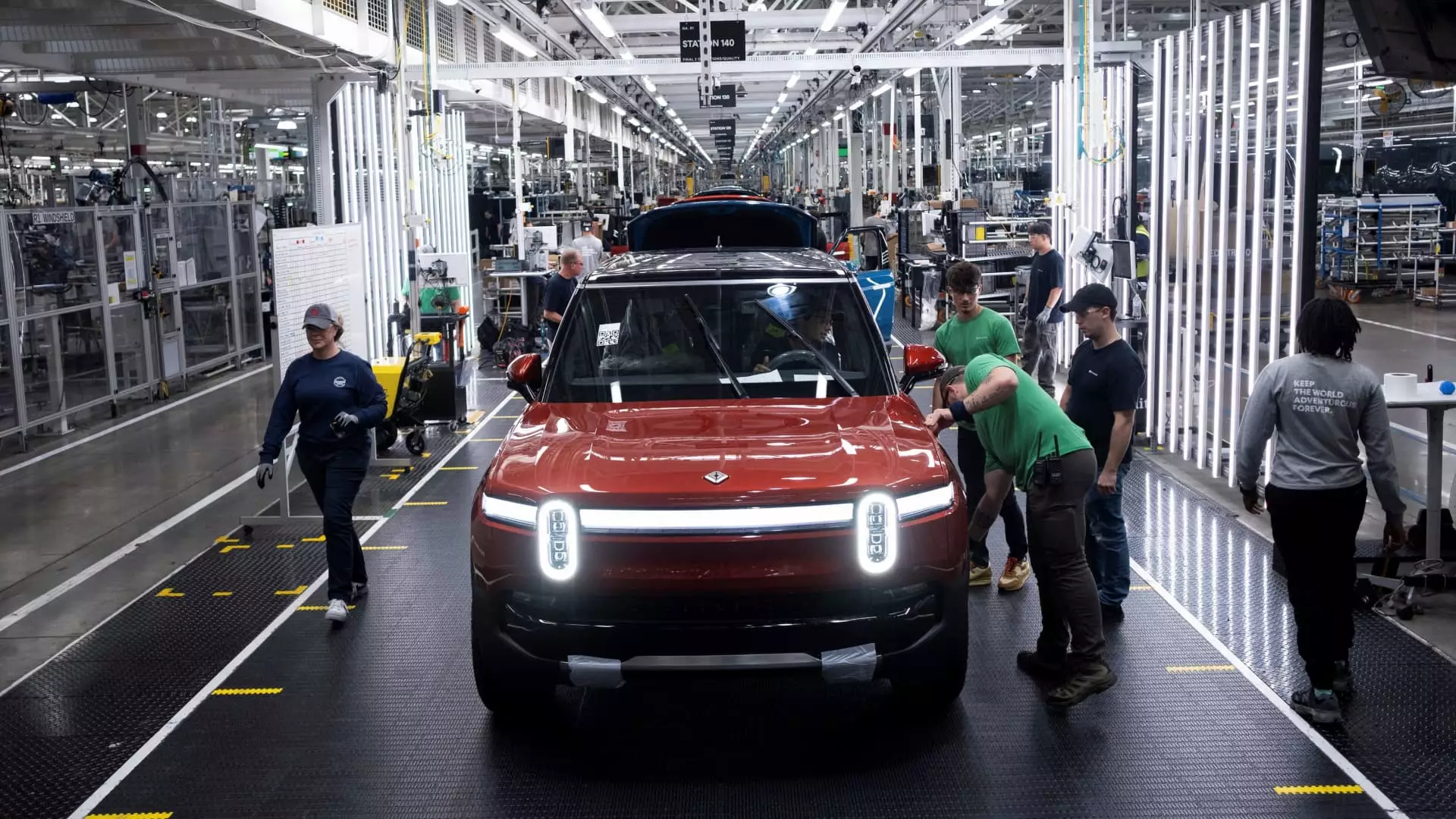Rivian Automotive, the electric vehicle (EV) manufacturer that has rapidly entered the competitive landscape, is currently facing a tough market as its shares fell approximately 4% in early trading on Friday. This decline comes on the heels of the company’s announcement that it delivered fewer vehicles than analysts had projected for the third quarter, highlighting the potential struggles the young automaker is experiencing. More concerning for investors is Rivian’s revised production forecast for 2024, which has been lowered markedly from an earlier target of 57,000 units down to a more modest range of 47,000 to 49,000 vehicles.
The primary reason for this critical adjustment, as articulated by Rivian, stems from a “production disruption due to a shortage of a shared component” essential for the production of its R1 vehicles and commercial vans. The company stated that these supply challenges began affecting operations in Q3 and have intensified in recent weeks, creating significant concerns surrounding its ability to meet production goals. The details surrounding the component shortage remain sparse; however, a spokesperson revealed it relates to Rivian’s in-house motors without delving into specifics.
During a Morgan Stanley investor conference, CEO RJ Scaringe acknowledged the difficulties posed by their supplier network, emphasizing the inherent challenges of managing a complex, multi-tiered supply chain. His remarks signal a realization that even a company fueled by innovation is not immune to the pitfalls that can arise from dependencies on suppliers, particularly when problems with critical components occur.
Despite these setbacks, Rivian has chosen to maintain its annual delivery outlook, projecting low single-digit growth compared to 2023’s figures. The company estimates a delivery range of 50,500 to 52,000 vehicles for the current year, with production figures for Q3 revealing the company produced 13,157 vehicles while managing to deliver only 10,018 units. These figures fell short of analyst expectations which had forecast deliveries of around 13,000 vehicles in the same period.
As Rivian continues to grapple with these challenges, the outlook for its stock is decidedly gloomy. With shares plunging over 50% in 2024, the company faces a critical juncture as it navigates an EV market that has seen demand wane unexpectedly. Coupled with a significant cash burn, these obstacles raise valid concerns about the company’s short-term viability and longer-term aspirations.
The journey ahead for Rivian Automotive is riddled with challenges as it adapts to supply chain disruptions and aims to regain market confidence. As they confront issues inherent in scaling production and managing complex supplier relationships, stakeholders will be closely monitoring not just Rivian’s response but also the broader implications for the electric vehicle industry. The ability to navigate these obstacles could dictate the company’s future trajectory in a highly competitive market.

